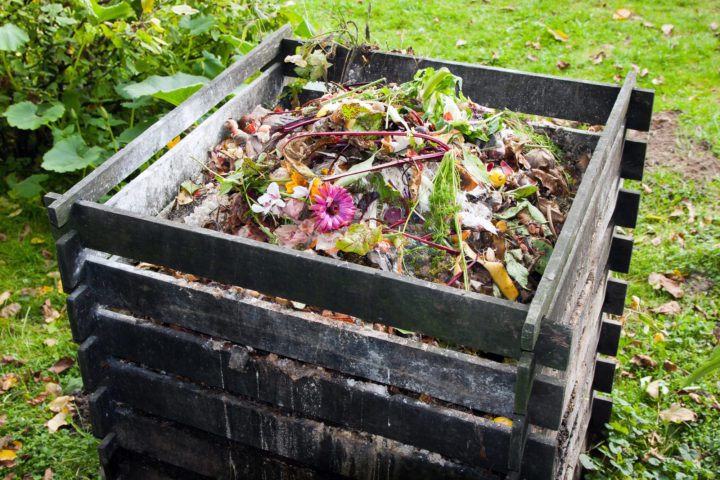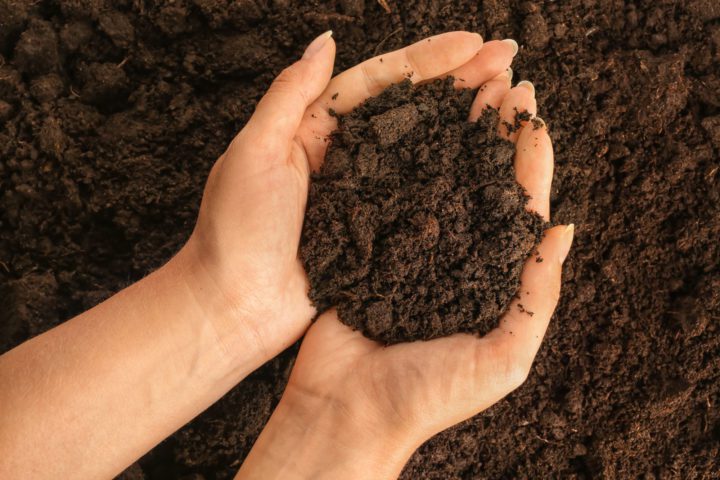DIY Soil Composting: Turn Kitchen Waste Into Garden Gold
Are you tired of spending a fortune on fertilizers? We've brought you a budget-friendly hack that turns kitchen waste and scraps into what gardeners call ‘black gold.' In today's eco-friendly world, creating soil compost through DIY hacks is an effective way to reduce your landfill dump and improve the health of your soil. Whether it's your lawn or home garden, it's time to get your hands dirty!

Image from Depositphotos
Dig Up Your Kitchen Waste
Knowing what to include in your compost pile is crucial to maintaining the proper nutrient balance. It all comes down to that everyday kitchen waste.
Compostable Waste
- Peels, skins, cores, and rinds of fruits and vegetables make excellent compost material. Don't throw away your carrot tops, celery stubs, and banana peels because these organic wastes provide an excellent nitrogen and carbon ratio.
- After your morning coffee or tea, save the coffee grounds, tea leaves, and paper coffee filters. Coffee stores a rich quantity of nitrogen, which rose bushes especially love.
- Crunched-up eggshells are a great addition to compost because they help reduce the acidic pH. They also hold the soil together for better structure and are a source of calcium.
- Collect hair from hairbrushes, salon clippings, or pet grooming sessions to add to your compost bin. Both human hair and animal fur are suitable for composting.
- Immediately after mowing your lawn, collect the grass trimmings and plant stalks to create compost. Fresh grass clippings retain a very high nitrogen content.
- Everyday trash items might be more useful than you think. Your compost requires some ‘browns' to complement the greens. Adding a few scraps of paper, shredded brown bags, wood chips, and dried autumn leaves will do the job.
Non-Compostable Waste
- Meat scraps, bones, dairy products, and cheese are unsuitable for composting because they produce foul odors.
- Just as greasy foods with high fat and oil content harm your health, they are useless to a compost pile. Such waste only slows down the decomposition process.
- Avoid sugary foods and processed items that can alter the microbial balance in your soil.
- Since we're talking eco-friendly, non-biodegradable options are a no-no. Synthetic materials like glossy paper, glass, plastics, tissue paper, and plastic bags should be avoided.
- Pet waste, such as cat or dog litter, contains harmful microbes that can damage the soil's health. Likewise, plants that are infected with pests or diseases should also be discarded.

Image from Depositphotos
How To Build Your Compost Pile?
Creating a compost pile is a rewarding way to recycle organic waste. Trust me, you will be shocked to see how compost magically enhances the health of your garden soil. Here's a step-by-step outline to help you;
Location
The foundation of a successful compost pile lies in its location. You can set aside a compost bin in a shaded area under the kitchen sink or spare a patch of soil in your backyard for a compost pile.
Build a Base
Start by creating a 6-inch-thick base layer to provide structural support. This layer can include twigs, straws, or small branches that create air pockets for better circulation.
How to Organize the Kitchen
Alternate Layering
Chop up your ‘browns' (twigs, dried leaves, wood chips) and your ‘greens' (vegetable peels, coffee grounds, grass trimmings) into smaller pieces. Start with a layer of browns, then follow it with greens until each layer is relatively 2-3 inches thin. As a general rule of thumb, stick to a 3:1 ratio of browns and greens for the right amount of carbon and nitrogen reserves.
Maintain Moisture and Temperature
As you build your compost pile, lightly moisten each layer with water for adequate microbial action. The pile should be damp enough but not completely drenched. Ideal composting temperatures range from 135-160°F, so during dry spells, you may need to water the pile, while rainy days may require more dry materials.

Image from Depositphotos
Turn the Compost
Turn the compost pit every week or twice weekly to introduce fresh oxygen. Frequent turning promotes aeration and accelerates the breakdown process.
Harvest Your Compost
Your compost should be ready within 3-6 months. Finished compost has a rich, dark color, earthy smell, and crumbly texture with no visible food particles. You can use it as a top dressing by layering it over the soil's surface or incorporating it directly into garden beds before planting. Googling “soil delivery near me” was a game changer for my gardening projects because I could save time and focus on preparing my compost.
DIY Soil Composting: Turn Kitchen Waste Into Garden Gold
To sum up, understanding the steps to build a compost pile can reduce household waste and enhance your soil's fertility and structure. Whether used as a soil amendment, mulch, or topdressing, this “black gold” supports sustainable gardening practices. It's time you rummage your waste bin and start composting for a greener garden and planet!
What Is Zero Waste Lifestyle
You May Also Like







